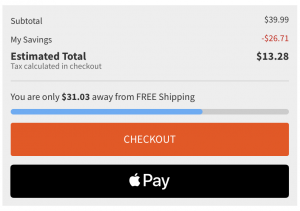Whether you’re new to the PPC (pay-per-click) world or you’re a campaign veteran, launching a new PPC campaign means a lot of prep work. While PPC is an effective digital marketing tactic, campaigns can get complicated and it can be easy to waste budget on the wrong clicks. With a ton of different moving parts to consider, attention to detail and organization will be your best friends.
But I like to think of myself as your friend, too. That’s why I’ve created this PPC campaign pre-launch checklist, including all the boxes you need to check before hitting “start”.
1. Get access to the client’s accounts
First thing’s first: before we dive into anything, we need access to the proper accounts. This includes the platform ad account that you’ll be running ads on, such as LinkedIn, Google, Twitter, Facebook, etc. Second, you’ll want access to the Google Analytics account. Not only will this be helpful for when you’re reporting later on, but taking a peek at existing user behaviour can help set up an even better strategy. For some additional info on providing/receiving account access, check out our guide on how to give your marketing agency access to your PPC platforms.
2. Have your PPC campaign strategy ready
Anyone can set up a PPC campaign these days, but it takes a well-thought-out strategy to run one successfully. Consider your objectives, your audience profile, platform mix, and how you will be measuring results. This will help you nail down those targeting constraints and help you set a sturdy foundation to build off of. Need some extra help? Take a look at our PPC Strategy blog and download our handy strategy template.
3. Gather your approved assets such as ad copy and multimedia
There is a wide variety of different PPC campaign types that you can run, including search, display, video, and more. The assets you require will depend on what type of campaign you’re launching, so be sure to communicate with your client exactly what you need. Whether you receive ad copy, images, videos, or all of the above, be sure to store them in a centralized location for easy access and organization. It also wouldn’t hurt to do a quick check to make sure your approved creative matches platform requirements and specifications—unfortunately, every platform is different. Nothing ruins your timeline like scrambling at the last minute to get a 15GB video down to an appropriate size!
4. Make sure your landing page is optimized and mobile-friendly
With a PPC campaign, you’re likely driving ads to a website. Ideally, you’ll drive traffic to a campaign-specific landing page with relevant content, to prevent your users from bouncing. With mobile traffic now making up over 50% of all web traffic, you want to make sure your site is mobile-friendly and responsive for the best experience.
5. Build out and test your UTM links
Now that your landing page is ready, let’s build out some tracking links. UTM stands for Urchin Tracking Module. It’s a simple line of code that can be added to the end of your URL to track different elements of your digital campaign. Make your UTMs as clean as possible and keep a record of them using our UTM tracking template.—you’ll thank me later when it’s time for reporting. Lastly, don’t forget to test your links! Not only should you click through them to make sure there are no spaces or missing characters, but also test that they’re showing up in Google Analytics properly. Here’s a pro tip: If there is an existing “?” in your original URL, you’ll have to adjust the UTM to start with the “&” parameter instead. Otherwise, it won’t track.
6. Set up on-page conversion and event tracking
Since you should already have access to Google Analytics at this point, we want to make sure that we’re capturing all of the relevant information from your users. With the UTMs that you just built, you’ll already be collecting some basic information in Google Analytics such as Average Time on Page, Bounce Rate, and Session Duration. That’s great, but we want to collect all of the information we possibly can. Take a look at your landing page and consider what would be high-value actions for your users. These might include button clicks, video views, or form fills. You can set up events and conversions for those specific actions in Google Analytics or Google Tag Manager. Then, make sure to test, test, test!
7. Get your reporting template ready
While optimizations and reporting come later, do Future You a favour and set up your report beforehand. Revisit your campaign strategy and consider what metrics are key to your objectives and carve out space for them in your reporting. Having a report template available early on will make it easier to do mid-campaign optimizations and track how they play out over time. That said, be sure to include an area for notes so you can record what those mid-campaign optimizations were!
Not sure where to start with reporting? Don’t worry, I’ve got you covered. Check out this blog on how to write insightful marketing reports.
And that’s it! Following this checklist will not only help you avoid making preventable mistakes, but will also improve your overall campaign performance. While this list is a great place to start, our door is always open if you need some extra help.
Happy campaigning!

Digital & Social Articles on Business 2 Community
(75)






